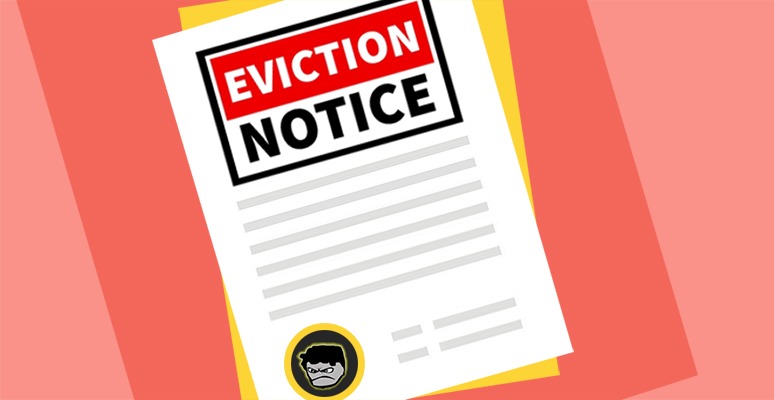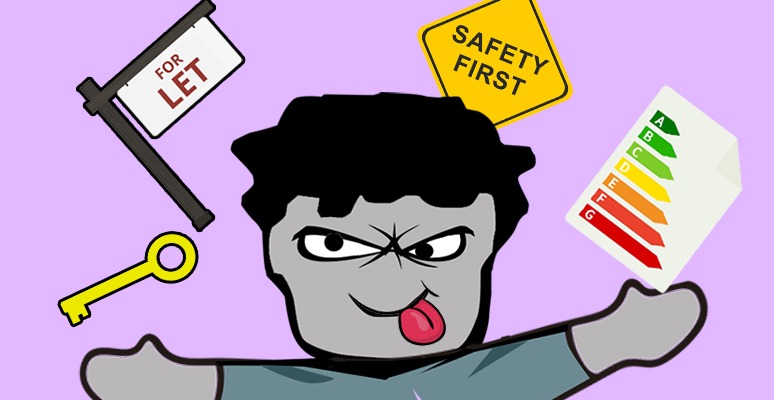
I’m continually amazed by the amount of landlords and tenants that are completely oblivious to their statutory rights, especially in regards to an imperative issue like repairs and maintenance.
I suppose ignorance is bliss… until you get sued to hell and back, that is!
From my experience, questions relating to repairs and maintenance receive far more attention than any other category in the landlording sector. At least it does around these parts. It’s a biggy, and often a topic of contention.
Hopefully I’ll cover some key elements in this blog post which will help simmer the confusion.
What is the Landlord and Tenant Act 1985?
The Landlord and Tenant Act 1985 sets out the rights and responsibilities of both landlord and tenant. It applies to all short leases for residential property and tenancies agreed for a period of less than seven years.
Most of what I discuss will be directly quoted from The Landlord and Tenant Act 1985. The entire legislation can be read online over here, but for convenience I’m going to copy the most relevant sections relating to the subject of repairs and maintenance. However, I would still recommend reading Section 11 in its entirety of the Act if you want to know all your statutory rights regarding repairs and maintenance.
Section 10: Fitness for human habitation
First and foremost, as per Section 10 of the Housing Act 1985, a privately let property MUST be fit for human habitation. The legislation stipulates the elements which are considered when defining whether or not a habitat is fit for a human:
In determining for the purposes of this Act whether a house is unfit for human habitation, regard shall be had to its condition in respect of the following matters –
repair,
stability,
freedom from damp,
internal arrangement,
natural lighting,
ventilation,
water supply,
drainage and sanitary conveniences,
facilities for preparation and cooking of food and for the disposal of waste water;and the house shall be regarded as unfit for human habitation if, and only if, it is so far defective in one or more of those matters that it is not reasonably suitable for occupation in that condition.
Section 11: Repairing obligations in short leases
The Landlord and Tenant Act 1985 states that where a short lease of less than seven years which started on or after 24th October 1961, the landlord is responsible for the following:
a) to keep in repair the structure and exterior of the dwelling-house (including drains, gutters and external pipes)
b) to keep in repair and proper working order the installations in the dwelling-house for the supply of water, gas and electricity and for sanitation (including basins, sinks, baths and sanitary conveniences, but not other fixtures, fittings and appliances for making use of the supply of water, gas or electricity), and
c) to keep in repair and proper working order the installations in the dwelling-house for space heating and heating water.
When the landlord is exempt from repairs
The Act also stipulates exceptions to areas of repair where the a landlord would not be responsible:
a) to carry out works or repairs for which the lessee is liable by virtue of his duty to use the premises in a tenant-like manner, or would be so liable but for an express covenant on his part,
b) to rebuild or reinstate the premises in the case of destruction or damage by fire, or by tempest, flood or other inevitable accident, or
c) to keep in repair or maintain anything which the lessee is entitled to remove from the dwelling-house.
The Landlord’s defence
It is the landlord’s legal responsibility to repair and maintain the aspects mentioned above. However, the Act states that the landlord can have a valid defence under the following circumstances:
1) If the landlord is not made aware of any defects by a notice of repair.
The notice of repairs can be given verbally or in writing, but it is advised to issue a written notice so there is written proof for reference. The tenant must then give the landlord sufficient time to carry out the necessary repairs.
2) If the tenant doesn’t provide access into the property for the landlord to make repairs. The Act states the following on this matter:
In any case where –
(a)the lessor’s repairing covenant has effect as mentioned in subsection (1A), and
(b)in order to comply with the covenant the lessor needs to carry out works or repairs otherwise than in, or to an installation in, the dwelling-house, and
(c)the lessor does not have a sufficient right in the part of the building or the installation concerned to enable him to carry out the required works or repairs,
then, in any proceedings relating to a failure to comply with the lessor’s repairing covenant, so far as it requires the lessor to carry out the works or repairs in question, it shall be a defence for the lessor to prove that he used all reasonable endeavours to obtain, but was unable to obtain, such rights as would be adequate to enable him to carry out the works or repairs.
Getting your landlord to repair and maintain
Firstly, get in touch with your landlord and explain what needs repairing. Most reasonable and professional landlords will accept their responsibilities and arrange for the issues to get resolved quickly.
If you’re dealing with a letting agent, contact them before the landlord. They should pass the message onto the landlord. However, it’s worth bearing in mind that tenants are legally entitled to obtain contact details of their landlord.
In The Landlord and Tenant Act 1987, it states that a landlord must provide an address in which they can be contacted by. The address doesn’t have to be the landlord’s actual residential address but an address must be supplied.
If the landlord doesn’t supply what is called a Section 48 address then the law states they are not entitled to receive any rent until they do.
Where a landlord of any such premises fails to comply with subsection (1), any rent or service charge otherwise due from the tenant to the landlord shall (subject to subsection (3)) be treated for all purposes as not being due from the tenant to the landlord at any time before the landlord does comply with that subsection.
In addition to the section 48 address, there is also a legal requirement for the landlord to provide their actual address. Section 1 of the Landlord and Tenant Act 1985 states that if a tenant puts a request in writing to the landlord asking for their address the landlord has to respond, also in writing and within 21 days giving their address.
If repairs aren’t done
If the landlord fails to comply with his or her responsibilities after serving a repair notice, it might be worth gently reminding them of their legal responsibilities. Nudging them in the direction of The Landlord and Tenant Act 1985 may prove to be useful. Failing that, then it may be time to venture down the legal route. You have the right to take your landlord to court to obligate him to bring the place to a legal standard and state of repair. If the landlord is found guilty in the eyes of the law, then they would be liable to cover the court costs of the tenant.
However, before going down that route, if you believe your landlord is neglecting their health and safety obligations, you can contact the HSE (Health and Safety Executive) and lodge a complaint. If they believe you have a case they will take the appropriate steps to resolve the situation, which could lead to compensation.
To seek free legal advice on the matter, I would recommend contacting your local Citizen’s Advice. They can advise you further and provide clarity on your case. Here’s a more focused blog post on Suing your landlord for disrepair.
Disclaimer: I'm just a landlord blogger; I'm 100% not qualified to give legal or financial advice. I'm a doofus. Any information I share is my unqualified opinion, and should never be construed as professional legal or financial advice. You should definitely get advice from a qualified professional for any legal or financial matters. For more information, please read my full disclaimer.


 Landlord Products / Services
Landlord Products / Services




























I am living in a property with an uninsulated bathroom extension. Naturally, this room suffers with condensation, which occasionally causes discolouration/damp patches on the walls. I am not bothered in the slightest by the damp patches and do not want my landlord to do anything about it. Does my landlord have the right to throw me out of the house for several days while the dampness/condensation issue is fixed? Would he require a court order to gain access, and if so how long can I delay for before I am actually evicted? I have never been in arrears but I think my tenancy may have officially expired. I have severe anxiety and cannot mentally cope with having to stay in a strange place while the bathroom is redone.